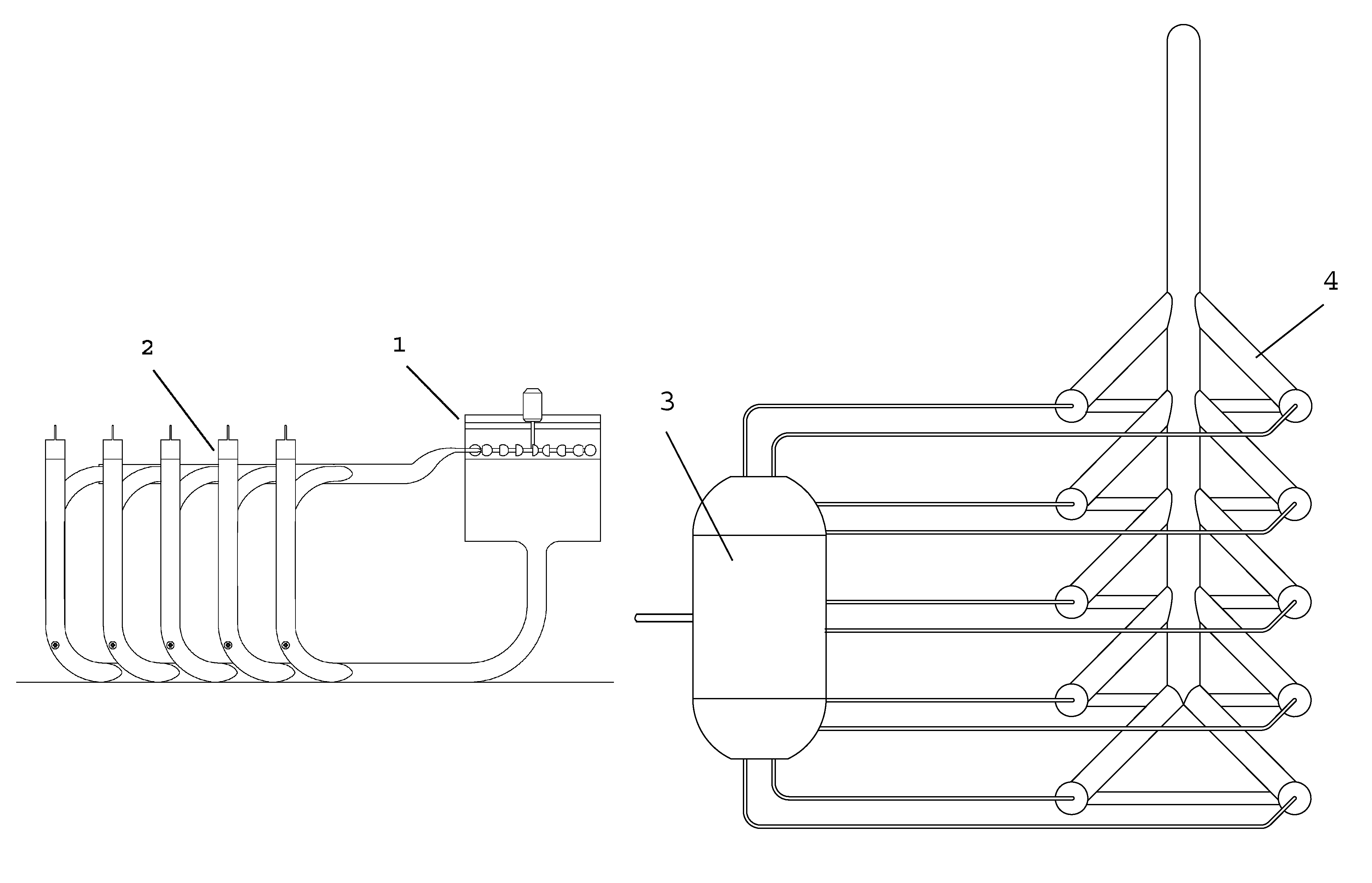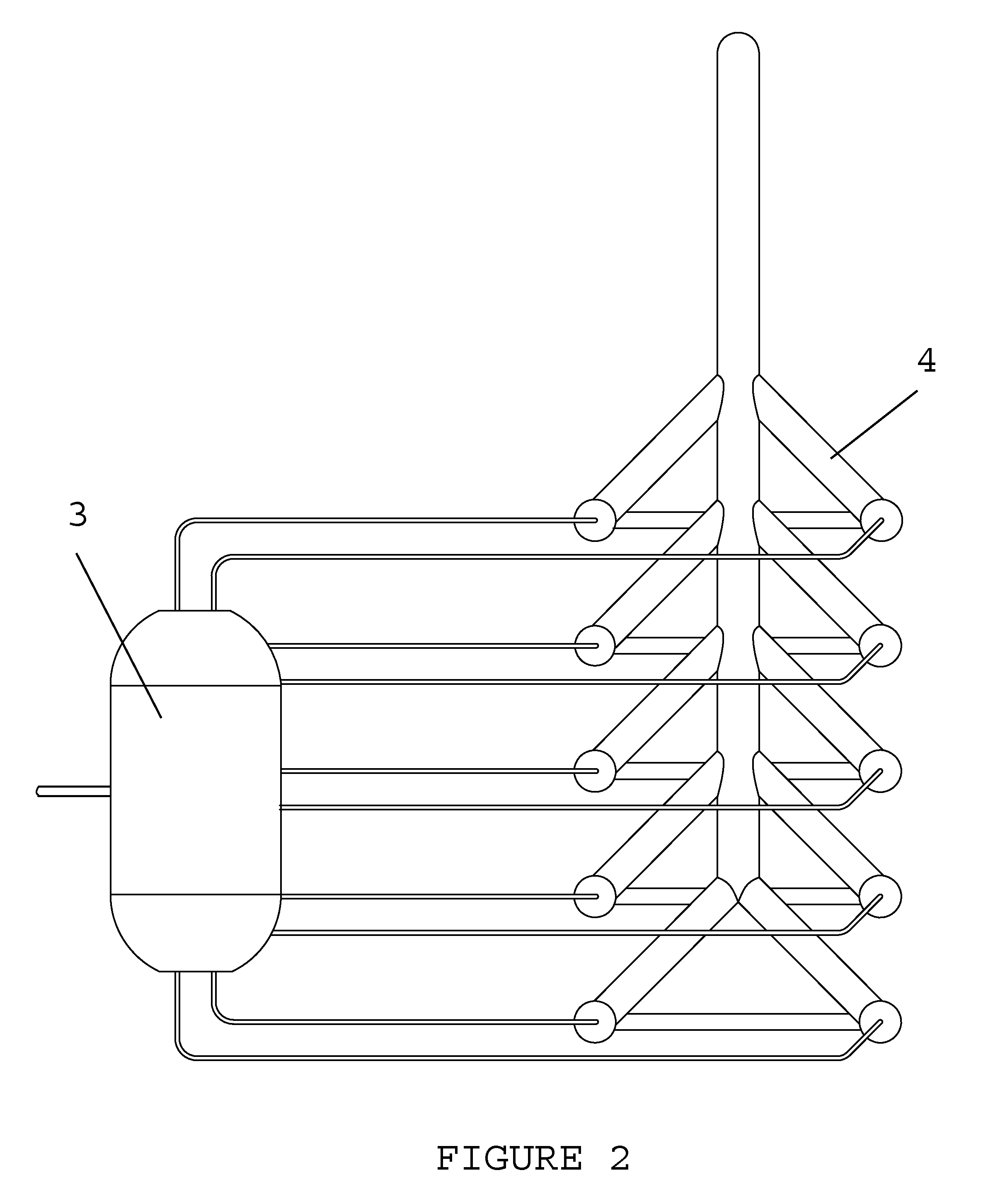Maritime device for producing electric power
a technology of electric power and electric power, which is applied in the direction of motors, engine working fluids, engine fuctions, etc., can solve the problems of large error in calculated power, difficult and uncertain task of accurate assessment of eolic resources, and difficult to measure accurately eolic potentials
- Summary
- Abstract
- Description
- Claims
- Application Information
AI Technical Summary
Benefits of technology
Problems solved by technology
Method used
Image
Examples
first embodiment
[0043]As stated before, the energy accumulator and rectifier equipment is fed by compressed air, in a first embodiment, from a maritime device by means of a motion produced by waves.
[0044]With reference to FIGS. 4 and 5, the marine device is defined by a floating pontoon (9) with articulated arm (11), an air cylinder (or piston), and a breasting system which consists of (10) mooring dolphins and breasting dolphins.
[0045]Its operation consists of a floating pontoon (9) which by following wave motion generates an ascending and descending vertical displacement of an articulated arm (11) attached to this pontoon. This arm comprises a ball socket end secured to a pile structure (mooring dolphins) and the other end is mounted on a floating pontoon (9) with its end trapped in a ring attached to the pontoon, which enables free movements thereon, with the exception of the ascending and descending motion.
[0046]This motion is used for the ball socket arm to activate a piston inside the cylinde...
second embodiment
[0048]According to the invention, the energy accumulating equipment can operate in conjunction with an eolic energy harnessing apparatus. With reference to FIGS. 7 y 8, such apparatus consists of three main elements. A sail or flag (15), vertically arranged and facing wind with vertical axis which crosses the sail and make it pivot thereon, a vertical screen (17), parallel to the sail and secured by its support and an air piston (16) which generates compressed air by sail or flag motion.
[0049]The sail and the axis (15) are arranged close to the vertical screen (17), so that when wind strikes both structures it brings the sail close to the screen until closing wind passing and then move the sail away an thereby, the sail is made to flap as a flag does with the wind.
[0050]The sail is secured to a ball socket arm of an air piston which through continuous sail motion generates compressed air which is transferred to the aforementioned hydraulic device accumulator. In order to follow the ...
PUM
 Login to View More
Login to View More Abstract
Description
Claims
Application Information
 Login to View More
Login to View More - R&D
- Intellectual Property
- Life Sciences
- Materials
- Tech Scout
- Unparalleled Data Quality
- Higher Quality Content
- 60% Fewer Hallucinations
Browse by: Latest US Patents, China's latest patents, Technical Efficacy Thesaurus, Application Domain, Technology Topic, Popular Technical Reports.
© 2025 PatSnap. All rights reserved.Legal|Privacy policy|Modern Slavery Act Transparency Statement|Sitemap|About US| Contact US: help@patsnap.com



